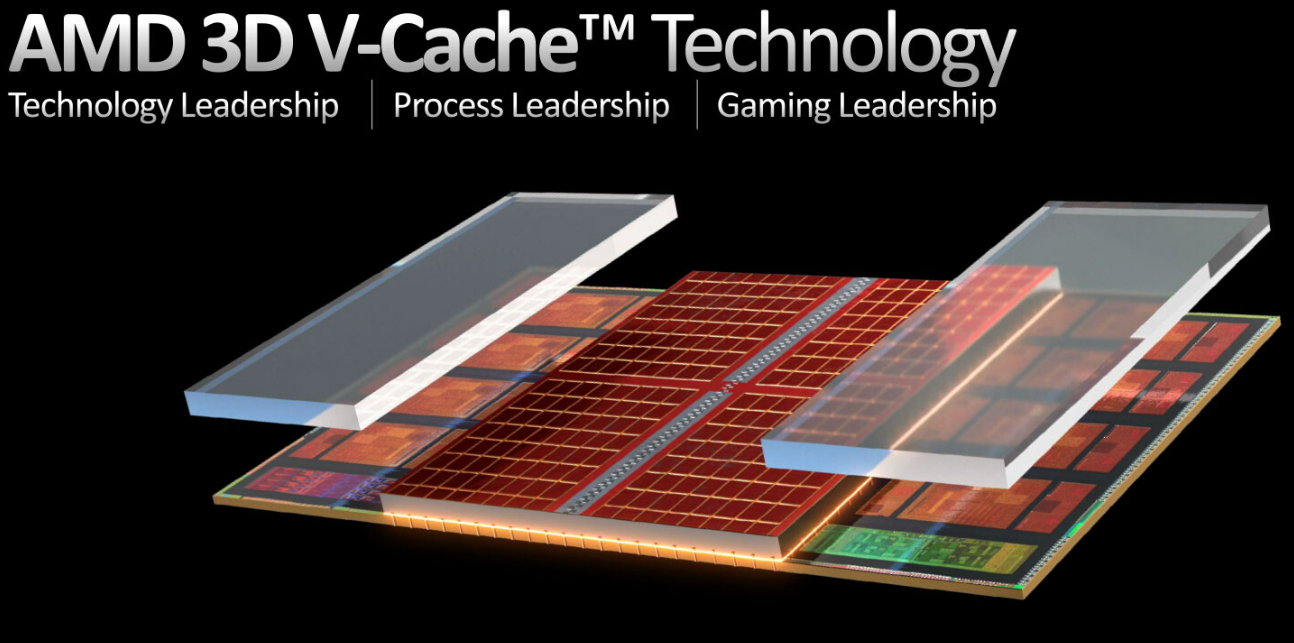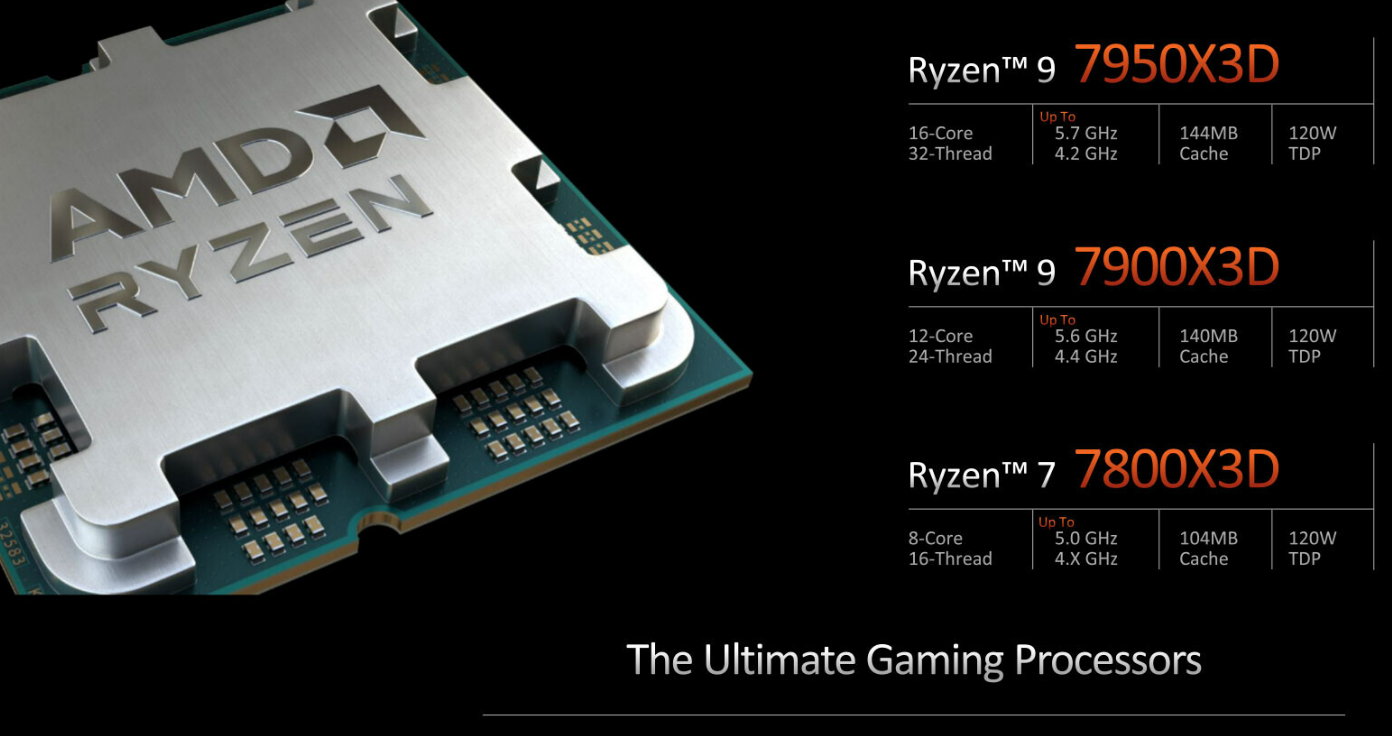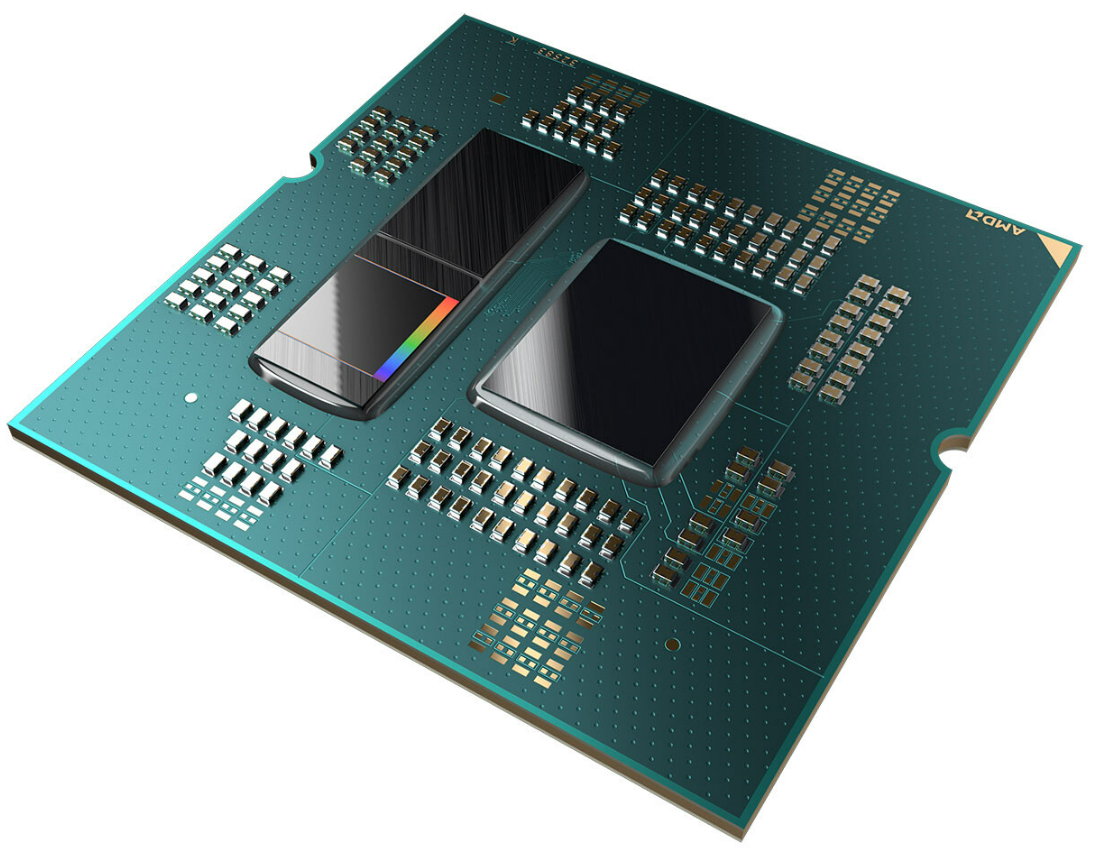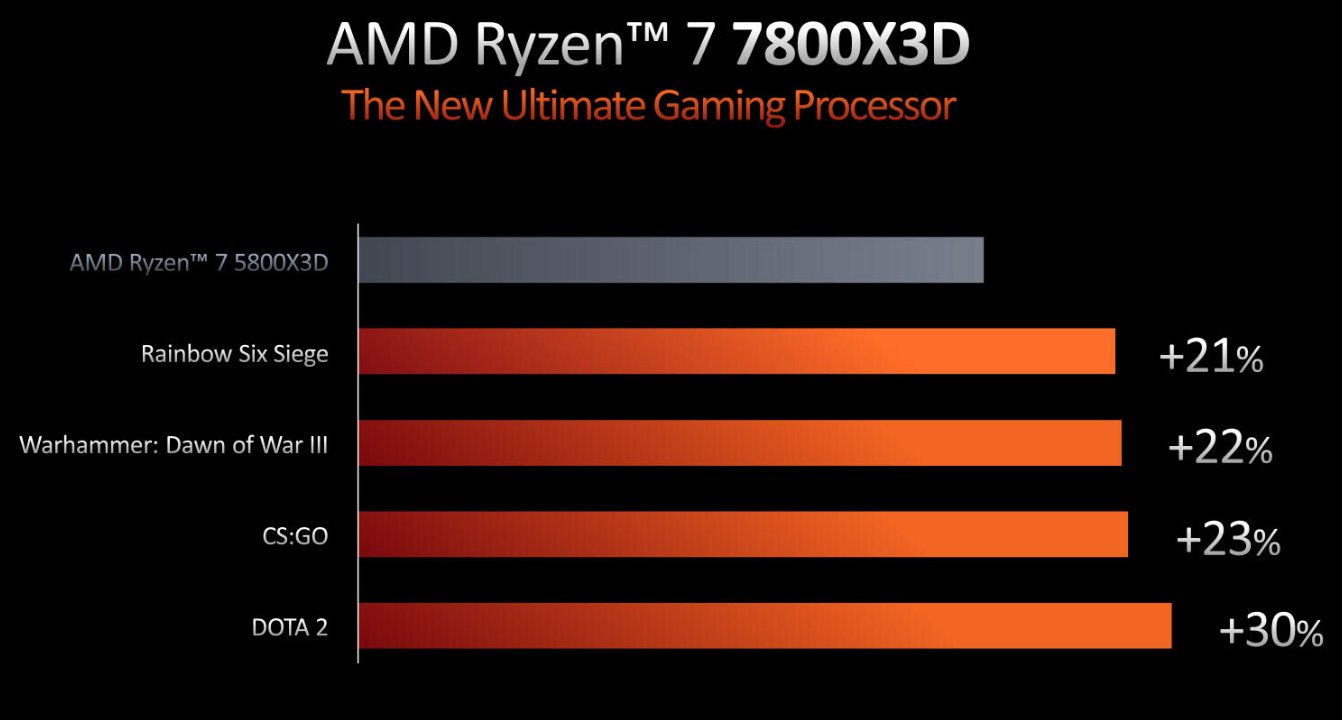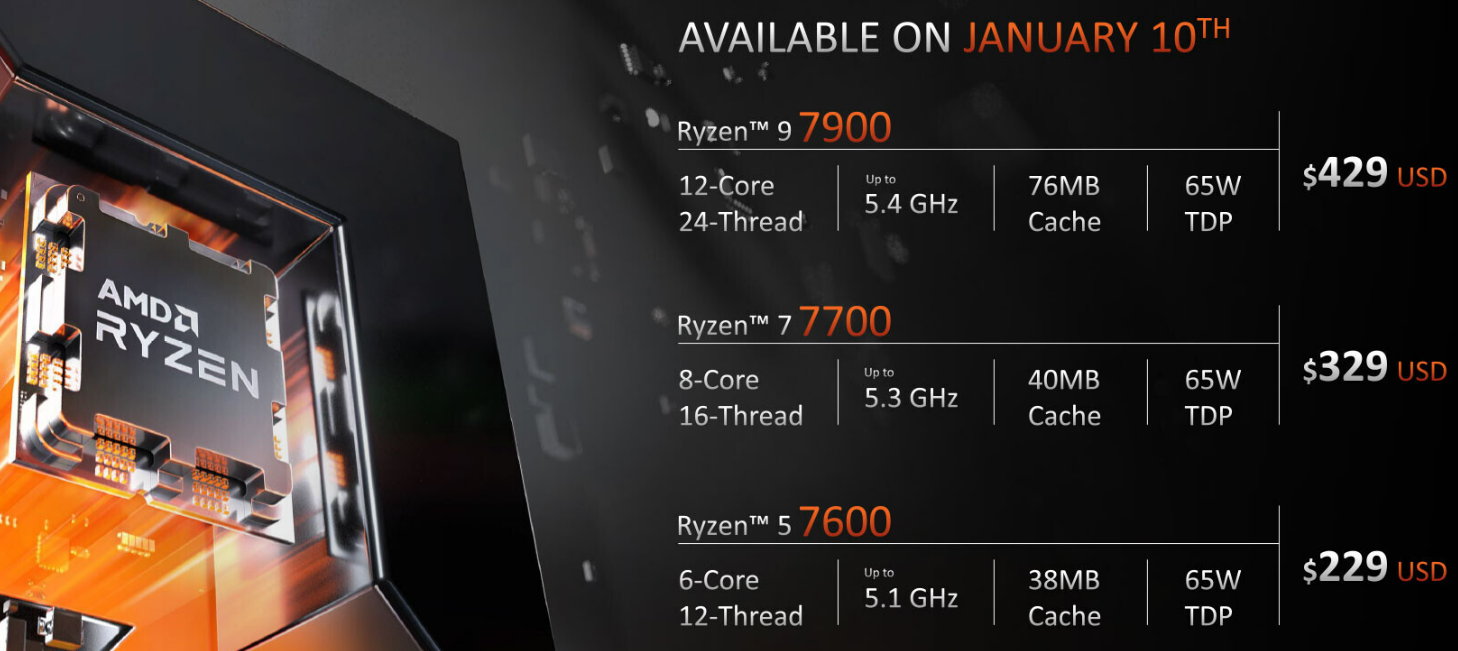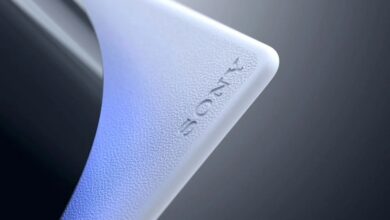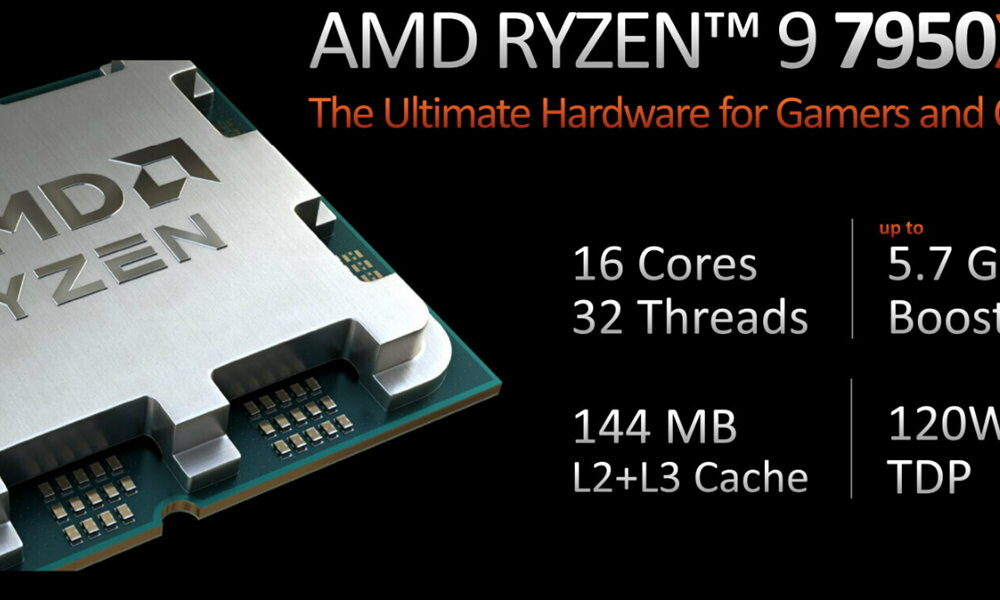
The Ryzen 9 7950X3D will be the spearhead of the new Ryzen 7000X3D series of desktop processors that AMD just introduced at CES. According to the company, will be the fastest processor in the consumer marketbeating its direct competitor, Intel’s Core i9-13900K “Raptor Lake”, in the most demanding tasks such as video games.
AMD has announced a few news at the conference scheduled for this morning at the Las Vegas fair. Among them, we must mention the Ryzen 7000 Mobile processors for laptops and the RX 7000 graphics also for laptops. It has also expanded its line of desktop processors that was released last fall, with new models for the general line and other special ones like the one we are dealing with in this post.
If you follow us regularly you must know them. AMD advanced a few months ago the development of a “secret” weapon to beat Intel’s Raptor Lake, the “3D Vertical Cache” technology. Or what is the same, the use of 3D stacked third-level cache to release the Ryzen 7 5800X3D with very good performance results.
This type of design of the L3 cache offers important advantages, at the silicon level and at the performance level, especially in games, at the same time that it allows to maintain the same socket as the standard models and all the advantages of its technology, in this case the derived from the ZEN4 microarchitecture that we have already seen in the Ryzen 7000 that have been marketed so far.
Ryzen 9 7950X3D, the fastest in the wild west?
AMD has come up with three variants for this platform, the 8 core 16 thread Ryzen 7 7800X3D, the 12 core 24 thread Ryzen 9 7900X3D and the 16 core 32 thread Ryzen 9 7950X3D which is the star of the show. All three work at high frequencies with cap above 5GHz (5.0, 5.6 and 5.7 GHz respectively) and like all “X” models have the multiplier unlocked for easy overclocking. The trio has a TDP consumption of 120 watts and total cache memory of 104, 140 and 144 Mbytes.
The total cache numbers of the top two processors have surprised in the live presentation, although AMD has later clarified this. The 3D vertical cache only applies on one of the two chiplets (CCD) while the other only includes the flat 32 Mbyte L3 cache. That’s how the accounts come out…
The goal seems to be that the first CCD with the built-in 3DV cache is in charge and is specially optimized for playing games, while additional workloads (such as audio stack, network stack, background services, etc) are handled by the second CCD.
In an age of hybrid processors, from ARM and Intel, a configuration of asymmetric caching should work perfectly from a software perspective. And there should be no runtime errors stemming from the ISA mismatch, since the CPU core types on both CCDs are the same “Zen 4”. When AMD began shipping dual-CCD client processors with the Ryzen 3000, the company worked closely with Microsoft to optimize programming for the operating system.
The results, always according to AMD, are excellent. The Ryzen 9 7950X3D outperforms the Core i9-13900K (Intel’s top-of-the-range for power) in gaming performance between 13% and 24% across the four tests AMD ran, while delivering substantially higher values in multi-threaded productivity benchmarks. Especially in workloads that involve big data, like file compression and DaVinci Resolve, the 7950X3D would outperform the Core i9-13900K by 24-52%.
To say that Intel is already preparing a Raptor Lake “Refresh” precisely to counteract these 3D from AMD. The idea would only be to increase the frequency of work between 100 and 300 MHz. We already told you.
Ryzen 7 7800X3D, the best for games
Interestingly, AMD has used the term “world’s best gaming processor” with the 7800X3D and not with the 7950X3D. This should mean that, despite its lower maximum operating frequency, the 7800X3D should offer the best gaming performance among the three models presented, perhaps because of the aforementioned vertical 3D cache distribution.
In terms of performance, AMD claims a 21-30% increase in performance over the previous generation 5800X3D. This can be associated with the increased IPC of “Zen 4” cores and faster DDR5 memory. AMD claims that the 7800X3D should particularly shine in CPU-limited gaming scenarios, such as high refresh rate settings playing at low resolutions, which are most often used in competitive gaming or esports, for example.
We will explain to you in due course the specific technical foundations of this technology and the cache design used. Ryzen 7000X3D processors will be available from february from 2023 and will be compatible with existing motherboards that use socket AM5. Some of them will need a BIOS/UEFI update that will surely be provided by manufacturers such as GIGABYTE or ASUS. Also, the USB BIOS Flashback feature is standardized by AMD across all motherboard brands that work on their platform, so it shouldn’t be a problem.
Other Ryzen 7000 processors
AMD has taken advantage of CES to announce other processors that expand the already existing Ryzen 7000 processor family:
As you can see in the image, these are three new models that do not use 3D cache or have the unlocked multiplier, but are substantially cheaper, with versions of 6, 8 and 12 cores, working frequencies above 5 GHz and a fairly content TDP of 65 watts.
Include a stock fan Wraith Prism RGB in the box for retail purchase. The three new CPUs are compatible with existing socket AM5 motherboards without the need to update the BIOS and of course, they feature all the technologies of the ZEN4 microarchitecture. They will be available in the retail channel from January 10.
